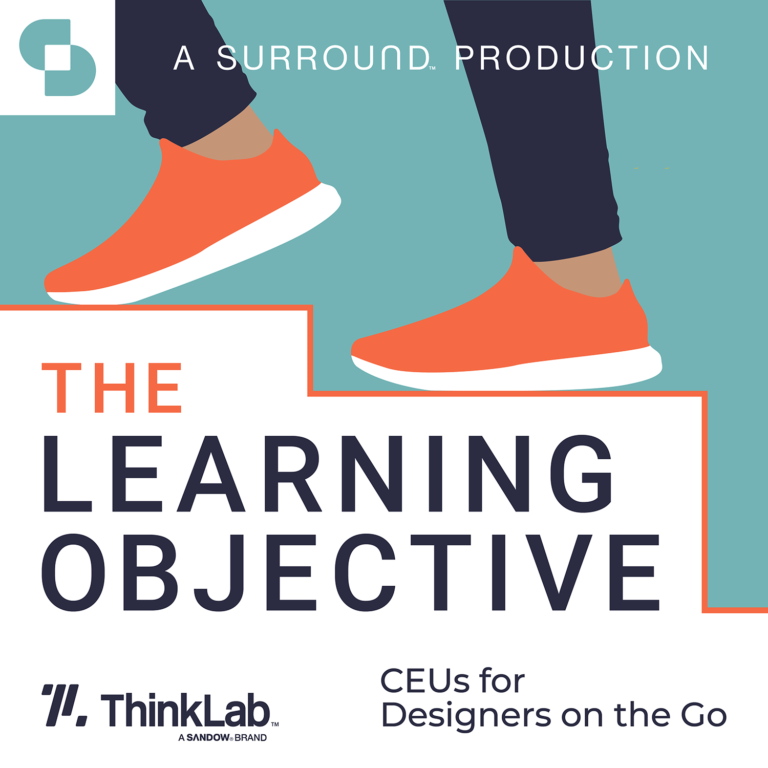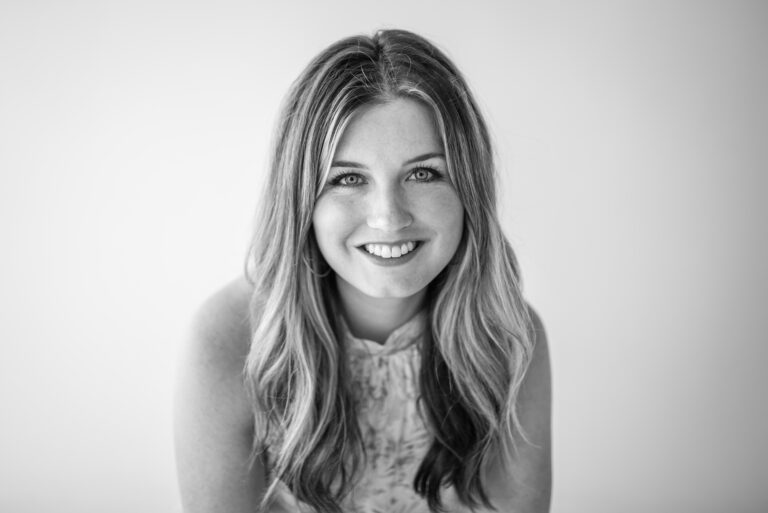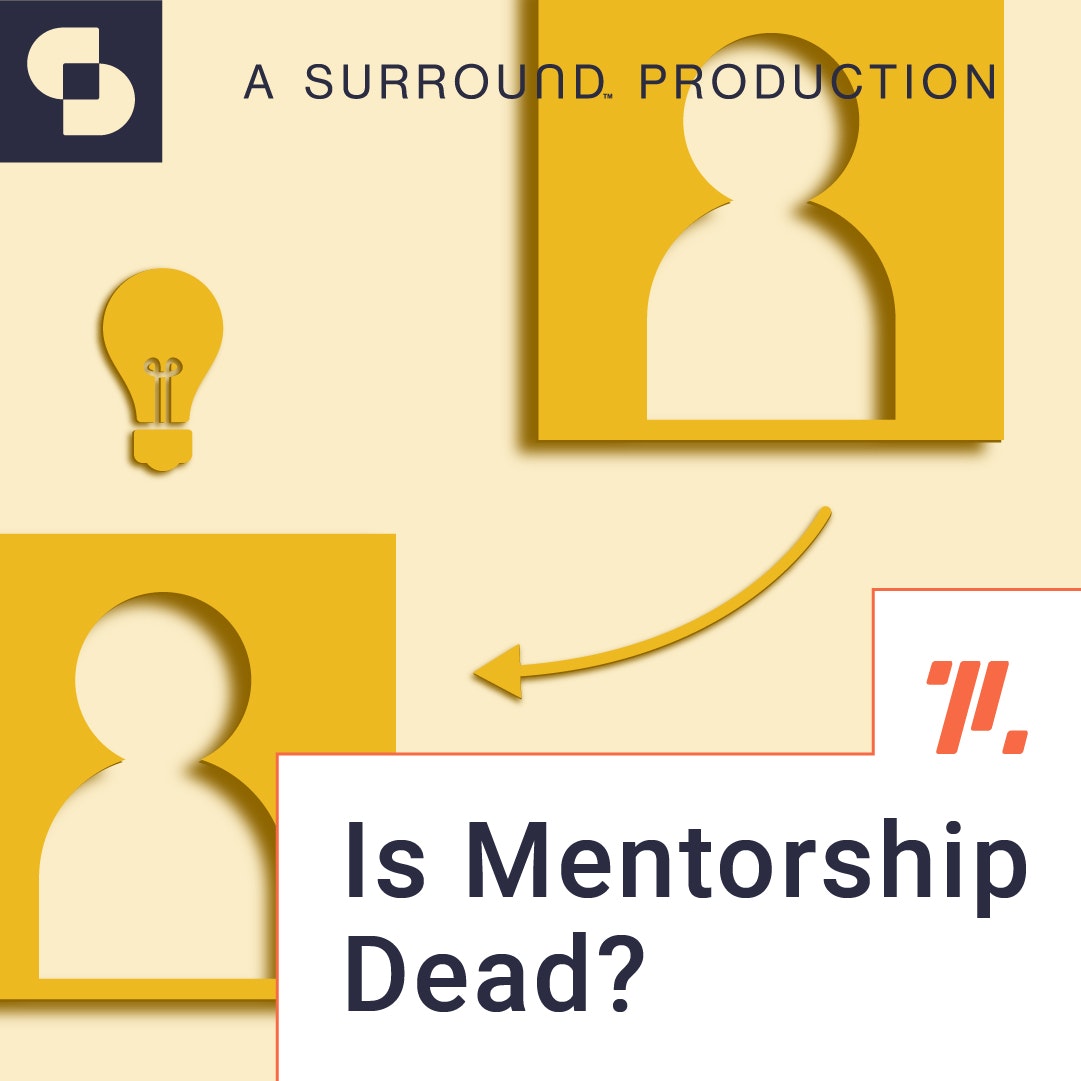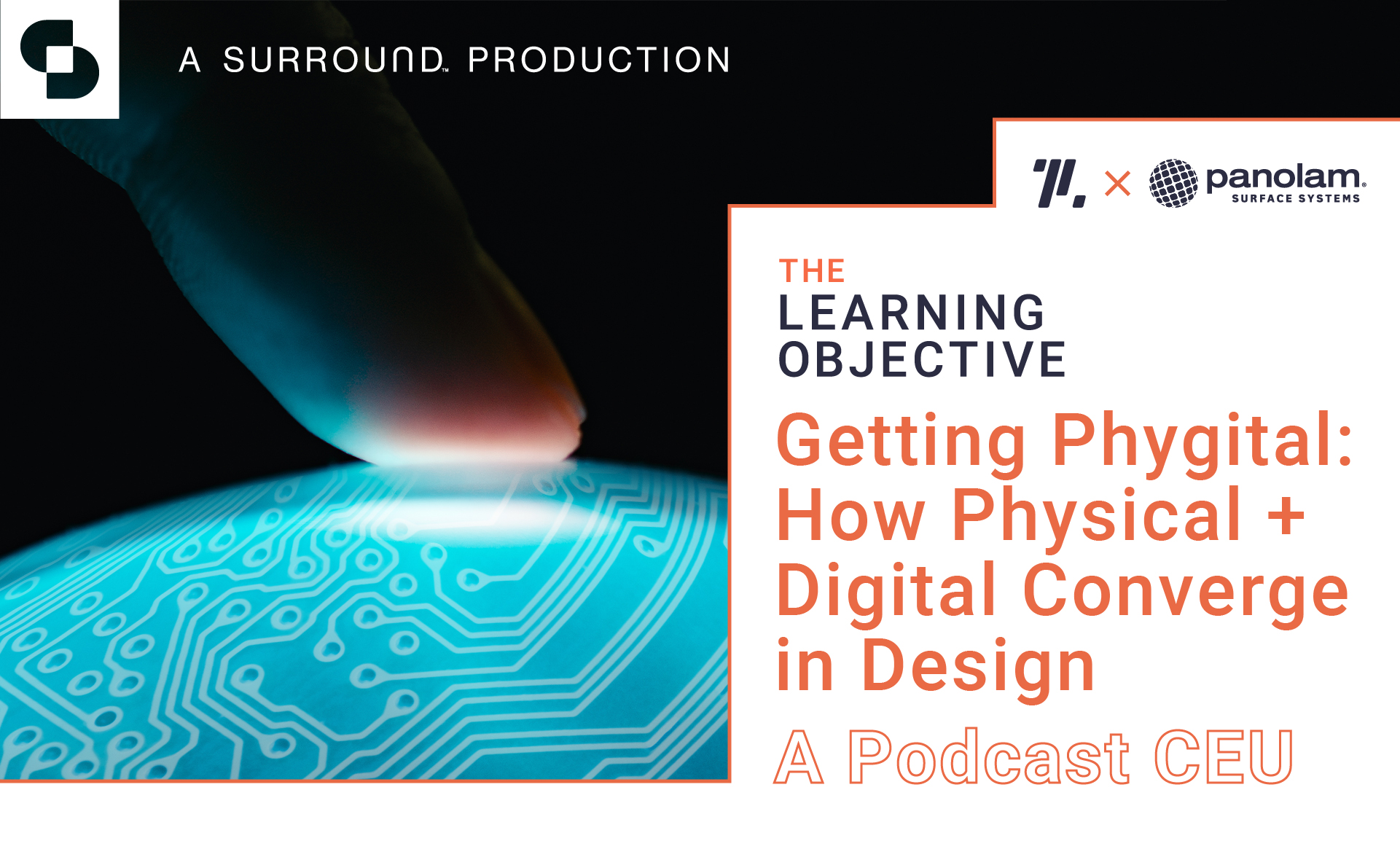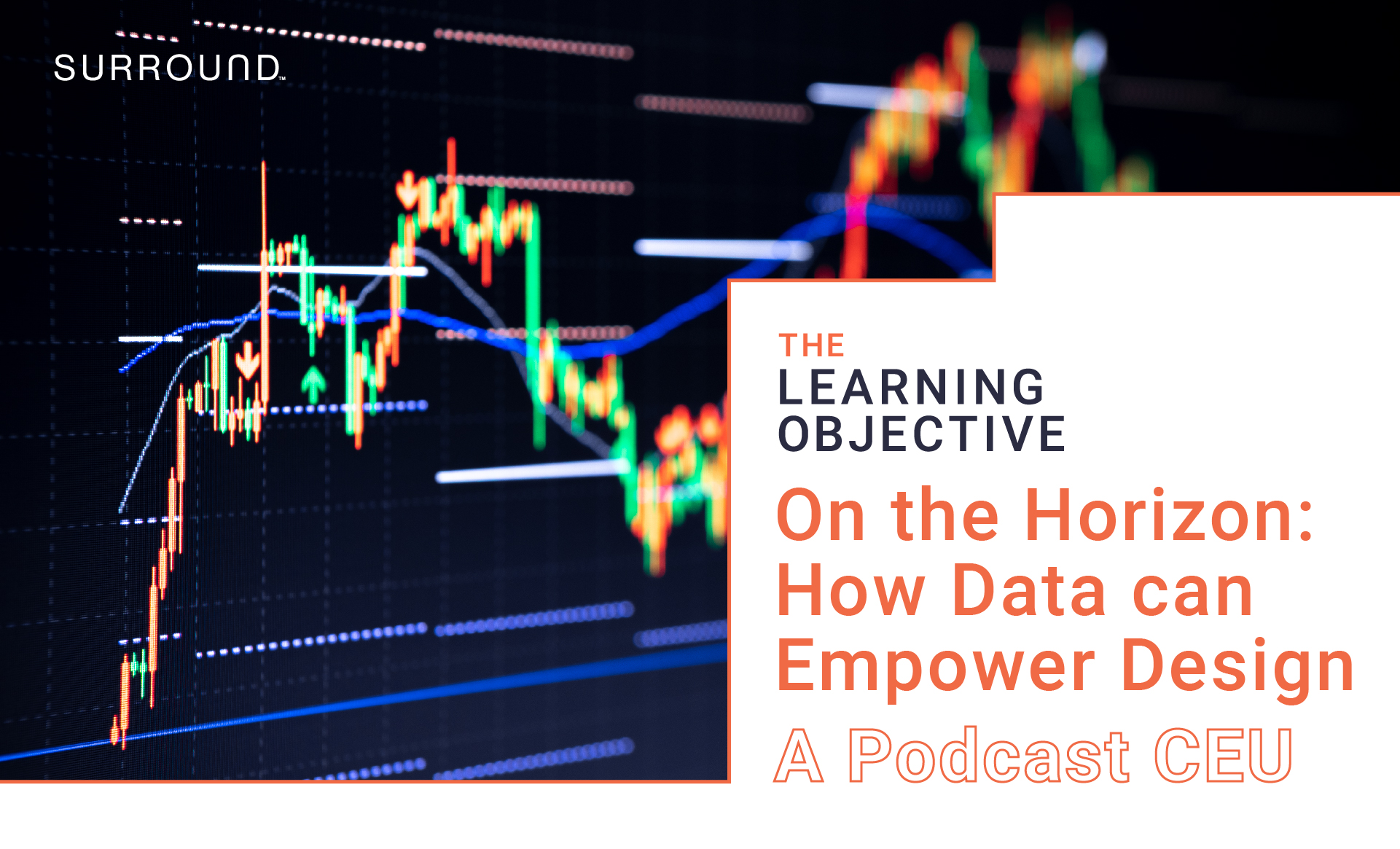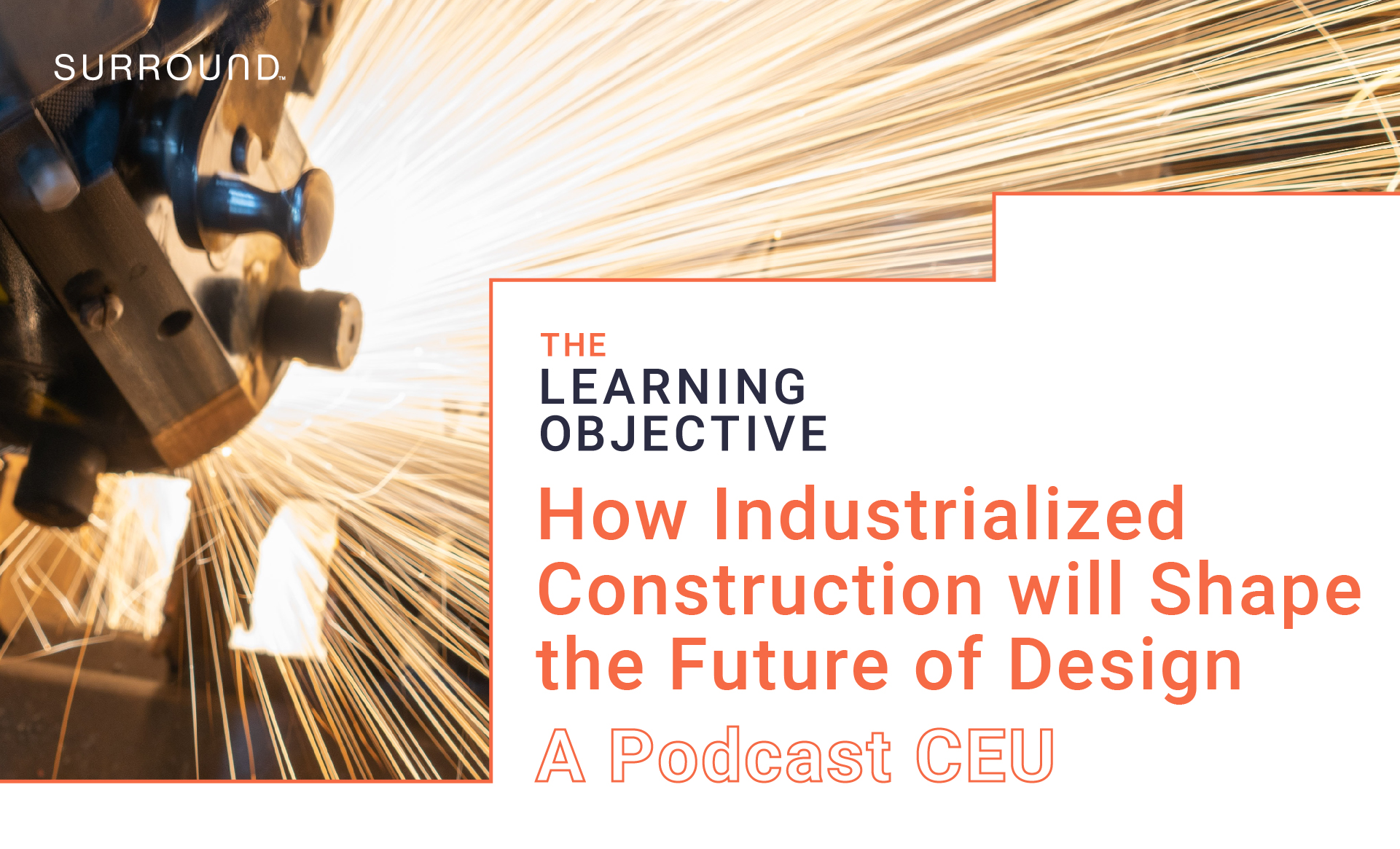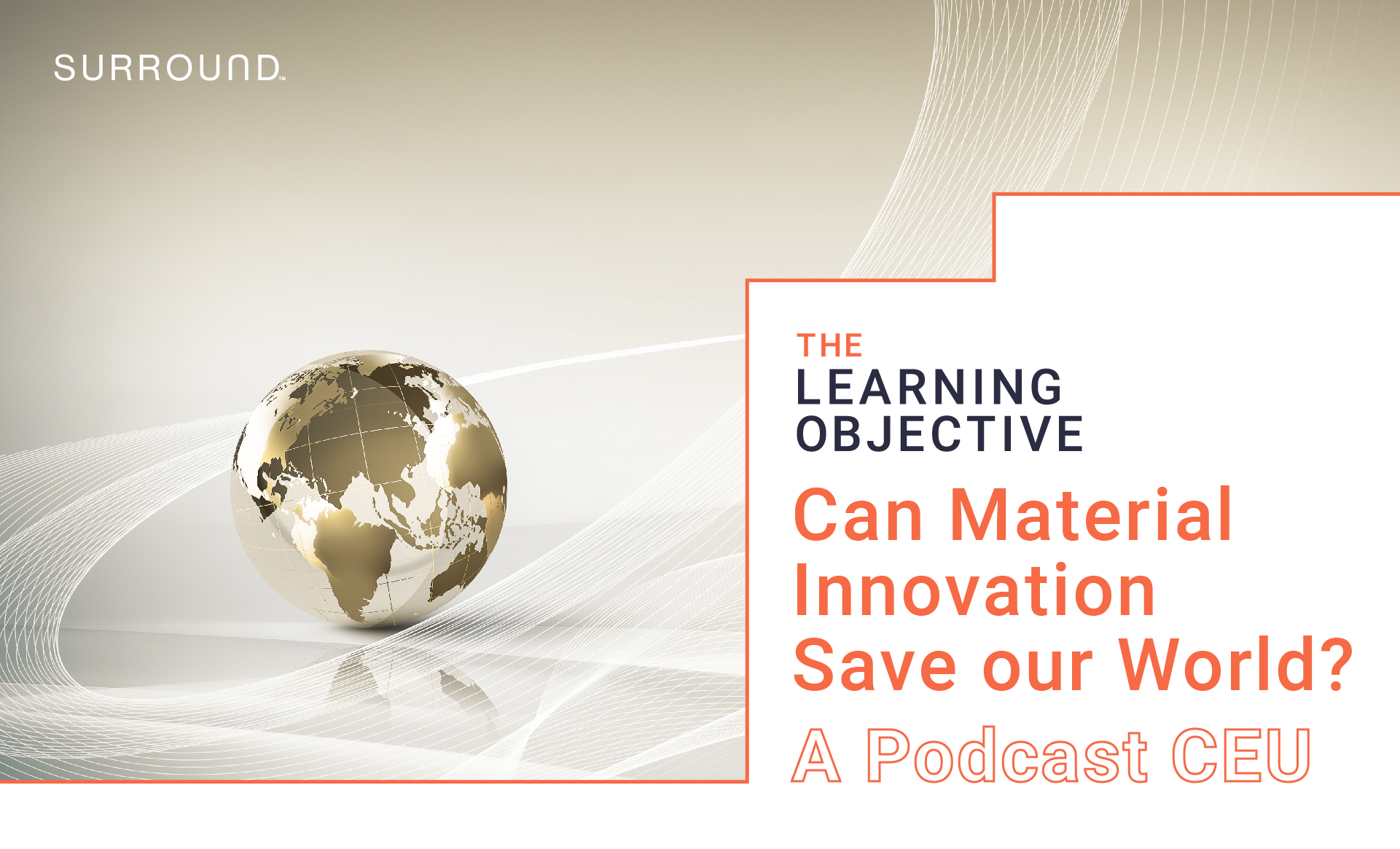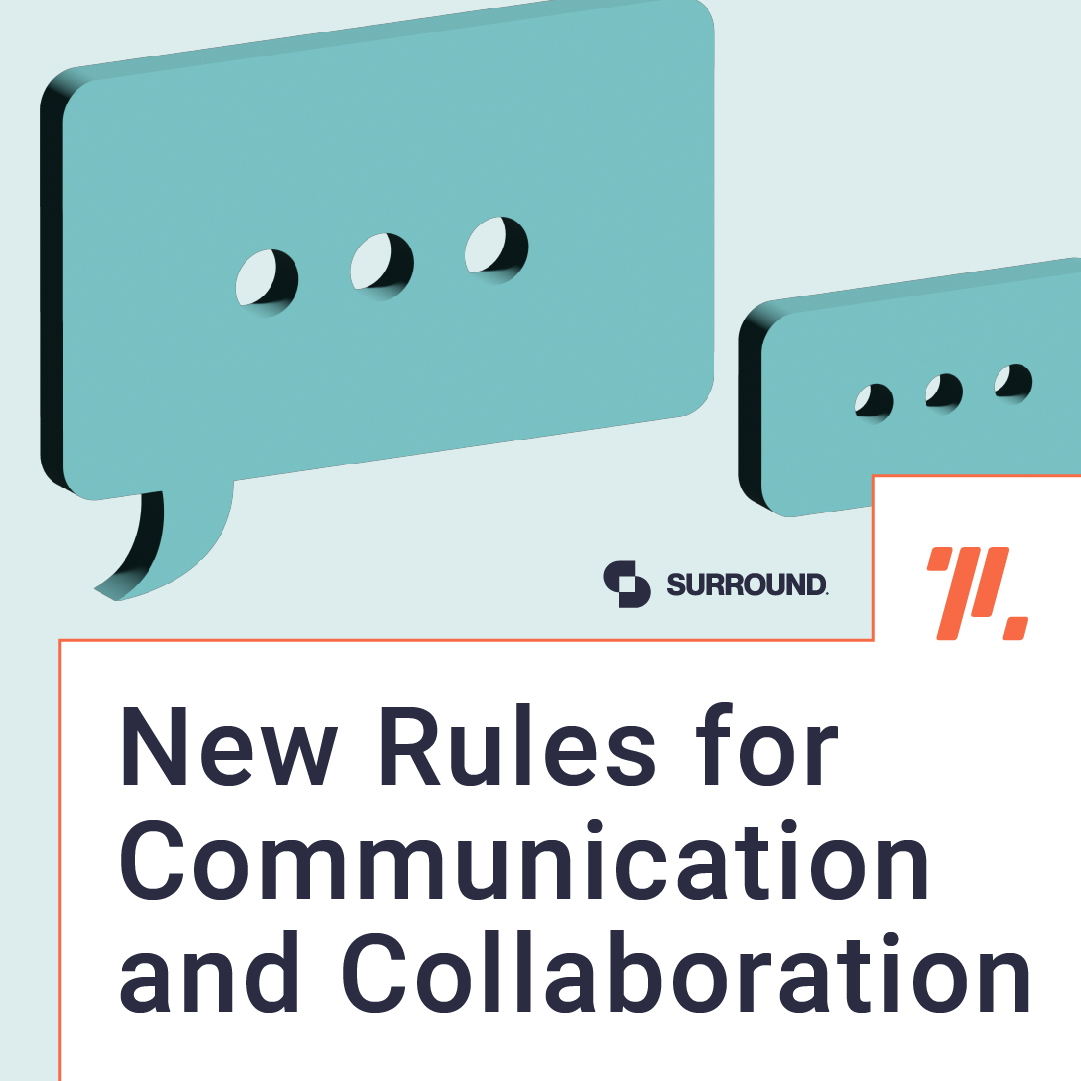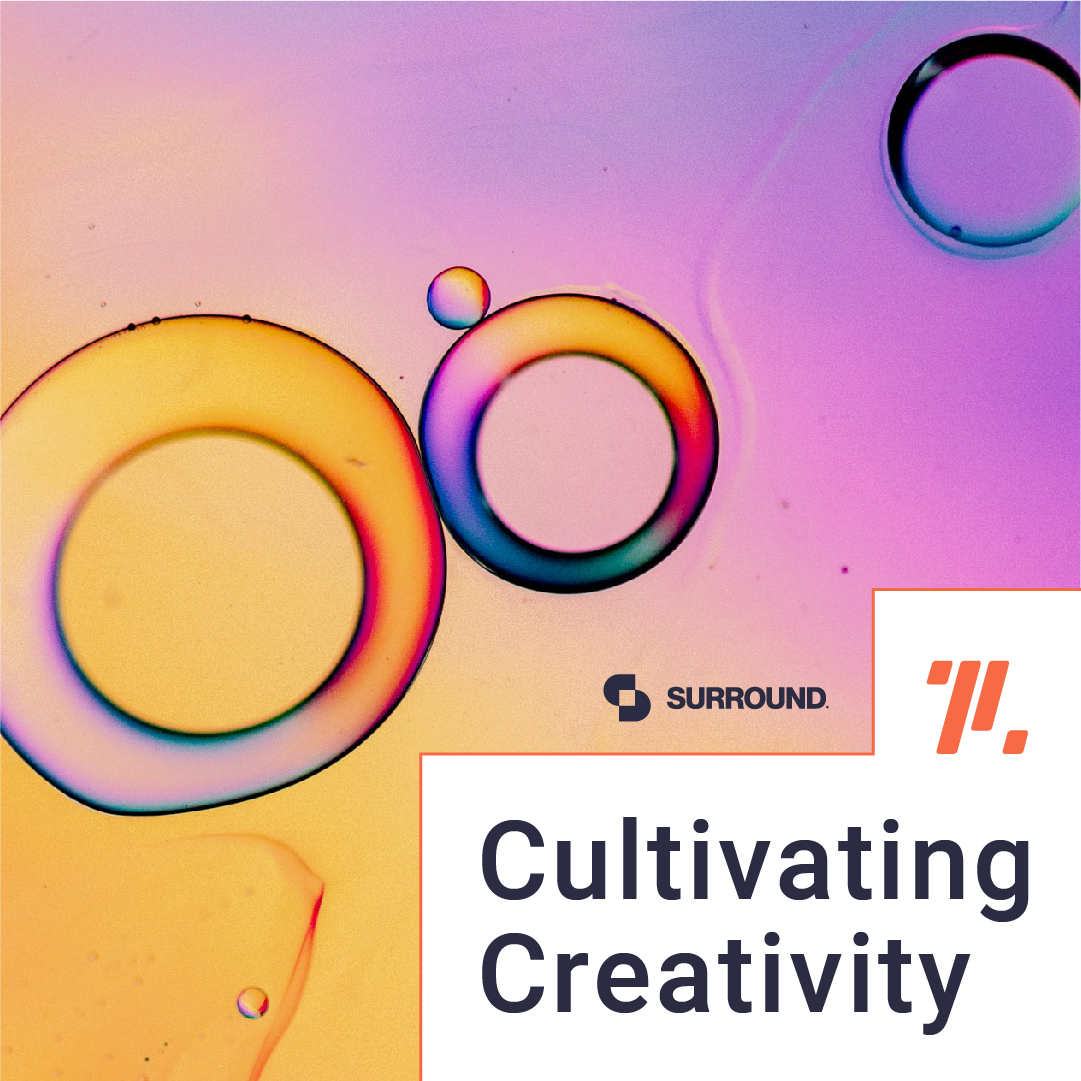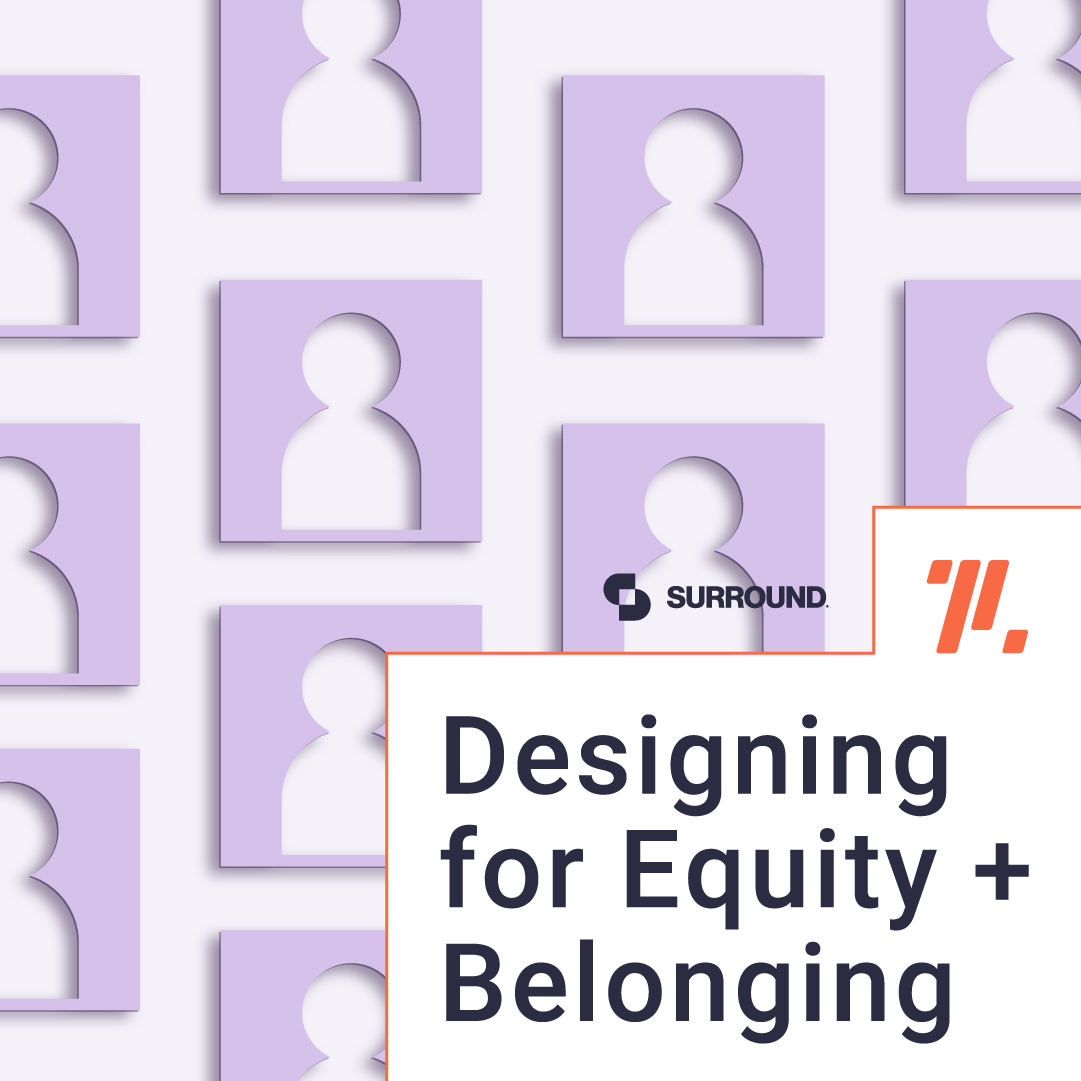Passion-driven people + a culture of overwork = the perfect recipe for burnout. ThinkLab’s Meredith Campbell interviews workplace and culture experts to share how you can reduce the risk of burnout, unlock creative problem solving and improve your work rhythm in this accredited CEU podcast episode.
Accredited for: IDCEC, AIA | 0.5 CEU/0.5 LU
After listening, you will be able to:
• Analyze the six root causes of burnout
• Identify the personality types and groups that tend to be most prone to burnout
• Assess how leaders and organizations can combat burnout
• Design your own performance cycles to work in harmony with creativity
Jennifer Moss, author of the book The Burnout Epidemic, explores how a culture and legacy of overwork contribute to major burnout in the interior design industry. She describes how leaders need to recognize the standards they’re modeling for their employees, and shares findings from her research.
Finally, Rahaf Harfoush, author of Humane Productivity, spells out the four stages of the creative process and gives her recommendations for countering “productivity propaganda.” She stresses the importance of protecting yourself from burnout by prioritizing rest, which is especially crucial for creatives.
Quiz: Want CEU credit for listening? Click here to take the quiz and earn your certificate of completion.
How it works:
Step 1: Listen to the episode
Step 2: Sign in at this link to take a short, 5 question quiz
* Scoring an 80% or above on the quiz will earn you 0.5 CEU/0.5 LU
Step 3: Upon passing the quiz, receive your certificate of completion via email from CEU sponsor Delta Faucets
Connect with our speakers on LinkedIn:
Special thanks to our CEU episode sponsor, Delta Faucet Company, for partnering with us to provide valuable insights on compelling topics for the design industry.
The Learning Objective Episode 1: Designing Against Burnout
Jennifer: [00:00:00] We have all these different sort of wobbly definitions of burnout. And I think what it does is it minimizes the real impact of people feeling burnout. And it stigmatizes people from being able to say, “I am definitely at risk of burnout.”
Meredith: Welcome to season one of The Learning Objective, the first podcast where you can receive CEU credit for listening. I’m your host, Meredith Campbell, research and content developer at ThinkLab, the research division of SANDOW Design Group.
In today’s episode, we’re going to tackle a nice, light, airy topic: burnout. But this subject is especially important for anyone whose job depends on creativity.
Jennifer: The science is crystal clear. You cannot be creative if you are sleep [00:01:00] deprived. You cannot be creative if you are exhausted, if you are super stressed all the time. These things are going to hurt your capacity to create and to imagine and to dream.
Meredith: I’m pleased to introduce Faye Adams of Delta Faucet Company, today’s episode sponsor, to walk you through what you’ll learn in today’s episode.
Faye: After listening to today’s episode of The Learning Objective, you’ll be able to:
First, analyze the six root causes of burnout. Secondly, identify personality types and groups that tend to be most prone to burnout. Thirdly, assess how leaders and organizations can combat burnout, and finally, design your own performance cycles to work in harmony with creativity.
Meredith: In 2014, there was a study using an assessment called the Maslach Burnout Inventory, which is essentially used to [00:02:00] measure burnout and job satisfaction. In this study, interior designers rated the absolute highest in cynicism, compared to other professions. And they were rated second only to nurses in exhaustion.
Now, fast-forward to 2021, and the American Psychological Association cited burnout and stress to be at an all-time high across professions, with teachers and healthcare workers topping the list.
And while the pandemic may have been fuel on the fire, that fire was already raging.
Jennifer: I’m an author and a public speaker and a workplace expert. And actually, I joke that I’ve gone from being a happiness expert to being an unhappiness expert because I’m so focused on chronic stress of burnout now.
Meredith: That’s Jennifer Moss, author of the book The Burnout Epidemic.
Jennifer: My original work started out in emotional [00:03:00] intelligence and psychological fitness building and looking at wellness strategies inside of organizations. And we realized if you can increase well-being and happiness, obviously all those other really great metrics increased, too.
But what about the people that are not even at neutral yet? What about those people that are just really barely making it through? So, I started to really focus on “How can I help those people, so that everyone can get the benefit of these well-being strategies?”
Meredith: In 2019, the World Health Organization included burnout in its International Classification of Diseases.
Jennifer: They actually define burnout as a workplace phenomenon. It’s workplace stress left unmanaged, and it shows up in these three major signs:
One: extreme levels of exhaustion and depletion, when you’re just feeling like it doesn’t matter how much you’re sleeping or resting. You just are feeling still exhausted, and work is taking over your life. You’re not actually engaging in things that make you [00:04:00] happy anymore.
And then it also shows up in a second sign of lack of efficacy in your job. So, feeling emotionally disconnected from your work, like what you’re doing doesn’t have value or it’s not contributing anymore.
And then the third one is high levels of cynicism or negativism towards your work, which is this hopeless phase. And a lot of people are feeling that right now, like this is always going to be like this. “I never can change this. I have no control over my work and my life.” Those kinds of statements and people feeling like that are big red flags. A lot of us have hit this new plateau right now where people are going, “This isn’t even burnout anymore. What is this?”
Meredith: Jennifer says burnout is about “pebbles becoming boulders” and identifies these six main causes of burnout:
1. Workload
2. Perceived lack of control
3. Lack of reward or [00:05:00] recognition
4. Poor relationships
5. Lack of fairness
6. Values mismatch
Lately, you hear about companies offering mindfulness or stress management training, or maybe extra vacation days, to help combat burnout. And while we can all agree that these are good things, they tend to put the burden squarely on the individual.
Jennifer: What we have been actually doing is failing people. Because when you look at the six root causes of burnout, they’re systemic, they’re policy-based. Sometimes they’re even societal and things that are not in an individual’s control to solve.
For example, when we look at the major causes of burnout, the number one leading cause pre-pandemic was workload, overwork. [00:06:00] You could be doing all the yoga, all of the breathing exercises, taking advantage of that subsidized gym membership. But if your boss is asking you to work 70 hours a week, emailing you at 11 o’clock at night, asking you to have something due by the morning, by 8:00 a.m., you cannot solve for your own burnout.
So that is what is critical for organizations to understand is that we all play a role. We play a role as individuals to manage our own self-care and leaders have to model self-care, but the organization has to look at the systemic problems that are leading people to burn out.
Meredith: We’ve all heard the saying, “If you love what you do, you’ll never work a day in your life.” But if passion for your job makes you immune to burnout, why is this such an issue with creative careers?
Jennifer: We found in some cases that passion and inspiration can be a prophylaxis to burnout. It can [00:07:00] be a buffer. But we can feel so passionate that our behavior moves from being harmonious passion to obsessive passion.
And that’s when we’re not actually recognizing the side in ourselves that some other people would call being a workaholic. Especially in groups where overwork is just the norm, where there’s a legacy, almost like a hazing. Your first few years on the job, you have to almost prove yourself by working ridiculously stupid hours. And then it becomes the legacy. Then the people that come up, and the new junior folks on the team, have to be hazed as well by working 60, 70 hours a week. And it’s not intentional. It’s just subconscious because it’s part of the legacy people have left. And so that’s why there’s burnout in this particular industry.
Also, because perfectionism is a personality at risk for burnout. You’ve got perfectionist concerns. You’ve got type A [00:08:00] personalities. You have people that are really driven by detail and do not like to make mistakes. And in some cases, if they make mistakes, it could totally have huge consequences. So you add that all up: passion-driven people and then a culture of overwork and a legacy of overwork. It’s a recipe for a burnout industry.
Meredith: So, Jennifer mentioned that perfectionists or type A personalities can be especially at risk for burnout. But are there other personality types we should consider at risk?
Jennifer: At first people joked that this is an introvert’s dream come true, being able to be at home by themselves in their space. But what we came to see and understand is that working remotely in a pandemic is completely different than working remotely outside of a pandemic.
There are people that are dealing with distractions, dealing with so many different aspects of their day. I say that, [00:09:00] pre-pandemic, you had this straight line to your goal, and now you have to climb mountains, you have to swim an ocean. You have all these barriers to hitting your goals.
So we’re just working so much more inefficiently. And those introverts, especially who are attracted to certain types of roles, they need flow. They need concentrated time, and that’s really impacting their well-being. And so the same things that used to feel frustrating at work are now the same things that are frustrating at home.
And also, we read in the data that folks who self-reported as introverted said that they missed even just going to see that one person that they used to connect with at work, like it pulled them out of their shell. With extroverts, we thought they’d atrophy, but their tendencies are to be more agreeable. Extroverts tend to just go with the flow, and so what they’ve done is adjusted. But I have heard that there’s an atrophy for everyone. We’re seeing the loneliest [00:10:00] workforce we’ve ever seen across the board for both introverts and extroverts.
Meredith: In fact, in a Harvard study in February of 2021, over one-third of respondents reported feeling serious loneliness. Now compare that to a 2019 study where one in five reported feelings of loneliness. Jennifer embarked on her own global research project to understand the pandemic’s impact on well-being and burnout.
Jennifer: It was really shocking just how unwell people were.
We were able to gather 1,500 respondents, and we had 3,700 qualitative responses, which is really important because we could read what people were feeling in their own words. Just the pains and themes that kept popping up, like isolation. A lot of women were disproportionately impacted because of the unpaid labor that they [00:11:00] were forced to have to juggle.
And so that was hard to read. And I worked with Dr. Christina Maslach and Dr. Michael Leiter, who are the foremost experts in burnout, and Dr. David Whiteside, who’s an organizational behaviorist and really understands how people feel inside of the workplace. And all of us read the data and said, “We’re not surprised that people are feeling lack of efficacy or disengaged. We’re not surprised that they’re feeling exhausted.” We all are exhausted, no matter if you’re working or not — it’s a pandemic. But we were really disheartened by how cynical people were. People were feeling very hopeless. And that’s where you start to become concerned about the downstream impacts of that. This happened before the Great Resignation, and we were predicting that there was going to be some sort of response.
Meredith: And they were right in their prediction: 2021 holds the highest average on record of workers quitting every month. Their research also revealed that [00:12:00] trust and communication were the top predictors for well-being during times of stress.
Jennifer describes that having a good culture is like a well-executed recipe. The right ingredients are the people. The right directives are the policy. And then having someone who can work with these ingredients to create the right outcome is leadership. So, what is the impact of culture on burnout and retention?
Jennifer: It has a massive impact. When you look at Microsoft’s latest survey, they had asked 31,000 people: Why are you leaving? Why are people leaving in droves? What’s this big rationale for that? And so we keep hearing about, “Oh, it’s compensation.” What they found in the data is that only 4 percent rated pay as the reason they were leaving.
A lot of people used to flow through various companies, moved from one company or one job to another because of pay or [00:13:00] compensation or perks. Now it has been identified that the major reason is “how my company treated me during the pandemic.” If I was able to talk about mental health at work in the pandemic, basically the culture is the reason why people are leaving. People, if they were paid well enough, put up with some of these issues before, because they weren’t so huge. But now people are saying enough is enough. It’s gone too far.
And so you’re hearing about late-stage, high-performing executives saying, “You know what? I’m going to go and do that thing like right now,” because of the statement, “If not now, when?” It’s almost like the pandemic was this catalyst moment for people to say, “OK, you know what? This is a life-changing, paradigm-shifting time in my life. So, I’m going to join a small team or go to a startup or retire early.” Or, “I’m a young professional, and this is not what I expected my job would be. So, I’m going to go do something myself or start on a passion project and work for myself.” [00:14:00]
These are the things that are happening all collectively at one time.
And when culture is the reason for that, it becomes a bottom-line issue. Organizations are now scrambling to say: “OK, how do I do all of this? How do I make sure I retain the people that are already here, and then pull people back to my organization and attract them for things that I used to have to keep pushing as the main thing that I want to present? No, it’s not money anymore. It’s: How awesome are we at providing telehealth? What kind of options do we provide around well-being strategies? What is our stance on mental health and destigmatizing mental health at work?” Those are the things that are attracting people, and they’re using them as an attraction strategy.
Meredith: Now, these statistics may feel grim and leave you feeling that pushing the “boulder” of burnout is an insurmountable task. But there are strategies that organizations and design leaders can implement [00:15:00] within their own firms and while guiding their clients.
Jennifer: A lot of leaders feel like they have to model a different behavior instead of realizing that if they demonstrate what is permittable in the organization, then other people will follow. Because if they’re saying, “You shouldn’t answer your emails past 11,” or “You shouldn’t answer your emails on vacation,” or “Don’t take meetings on weekends,” but they’re also saying, “You shouldn’t do that, but I’m going to do that constantly,” nothing will ever change. If I’m saying, “I want to make sure that your mental health is really important and we should talk about mental health,” but I never talk about mental health myself, you just continue to have those same invisible pressures placed on employees to never be able to speak up.
So it’s a requirement that everyone participates. And so, by modeling the behavior, leaders will end up getting the benefits to that over time. Because they’ll start to realize, “Oh yeah, I have set guidelines. And now I’m [00:16:00] not taking emails and calls at 7 o’clock at night or 10 o’clock at night. And now I’m feeling, wow, I’m healthier, I’m better.”
The downstream impact will be that we recognize how important it is for us to also walk the talk. So we need to be very strict on those guidelines. There are a lot of countries now that are starting to bring in this right-to-disconnect law. And I keep telling organizations: Why wait for a law that allows your employee to sue you for bad behavior, instead of you just taking that on yourself as something that you want to commit to? Because that’s human-centered leadership. And if we’re all behaving that way, we’re all committed to that goal, then there’s no invisible pressure. There’s no one being promoted because they’re doing that 90 hours a week and the other person is doing a respectable 40 hours.
We also have to understand that just because we’re working more hours doesn’t mean we’re more efficient or effective or productive. [00:17:00] Hours don’t signal effectiveness.
Meredith: I want to highlight the point that Jennifer just ended on: “Hours don’t signal effectiveness.” This is a huge shift in how many of us have thought of productivity and work. In the second half of this episode, we’re going to transition the conversation to focus on the role each of us plays in protecting ourselves from burnout. This is especially important if your job depends on you creating.
Rahaf: I am a digital anthropologist and researcher. I specialize in the intersection of technology and culture: how technology is changing the way that we live and work and play and parent and date.
Meredith: That’s Rahaf Harfoush, author of Humane Productivity.
Rahaf: Another area of focus is [00:18:00] the relationship and the history that we have with productivity culture. Because as somebody who considers themselves to be quite ambitious, I had a couple of experiences with burnout that really forced me to reframe how I approached my own work, my own business, and how I designed my life.
Meredith: Rahaf warns us against threats to creativity or what she calls “productivity propaganda.”
Rahaf: There’s kind of two major issues that I see that are currently unfolding. So the first is that our current definition of productivity is based on nonstop output, right? It’s this idea that we’re going to work nonstop, which has evolved into what I call “productivity propaganda,” where we’re now bragging about how long and how hard we’re working. But the fundamental root of this model, of this way of thinking, is the idea that the ideal or the standard that we should be holding ourselves to is working nonstop. And this was based on the industrial [00:19:00] revolution, when people were working on assembly lines. It was absolutely not created and not designed for knowledge work.
The second big issue is that all of the productivity is based on what I call the tangible part of the productivity process, which means we’re all obsessed with the parts of the process that you can see. So, are you on a call? Are you working on a specific file? Are you building something, creating something? It’s all about this tangible output. But if you’re an architect or a designer or a creative, so much of your job is imagining. It’s bringing something to life, it’s ideating, it’s daydreaming. You essentially are creating something from nothing, and you need space and time to do that.
So, what ends up happening is you have a system where your creativity needs space and time to actually come up with the idea to fix the client problem, to solve the constraints that you’re working with on your latest project. But we’re actually only obsessed with the end part of that process, which is: [00:20:00] What have you actually done? Not recognizing that thinking is doing. Staring at the wall is doing. Walking your dog and letting your mind wander is doing. And we’re holding ourselves up to standards where we’re expected to work nonstop all the time. So we are fundamentally creating a system of work that is incompatible with the two things that we actually need to be creative.
Meredith: So if productivity systems are often in conflict with creativity, is there a better way?
Rahaf: As I was searching for a better way to work, I kind of noticed that everyone had their own method and their own framework, but I was constantly being asked to force myself to conform to whatever that system was. So: “This is the morning routine,” or “Pomodoro says you should be working for 25 minutes.” Or Cal Newport’s deep work. He says you should be working for 90 minutes.
So I was constantly trying to fit myself into these buckets. And finally, I was like, “These aren’t [00:21:00] working for me.” I was like Goldilocks: This one’s too long, this one’s too short. And finally I said, “What if instead of searching for the right solution for me and expecting to find it out there, I just build my own?” After a lot of research and talking to people and prototyping different attempts, I realized that every single person goes through the same four stages of a creative process.
So you’re working on a project, and there’s the initial excitement. I don’t know about you, but most people start feeling really excited right before they get into flow. We call this the replenishment. Imagine you’re on the upward trajectory. You’ve started. You’re really excited. You’re at your peak energy, and you’re working.
Then eventually, you hit what some people call flow. That’s when everything just gels. We call it peak performance or optimal performance. And this is when you’re just vibing with the work. Some people describe it like the work is just being downloaded into their brain and they just need to get it out. I know that when I’m writing and I’m in this state, it’s like the chapter’s already written, and my fingers just have to move fast enough to [00:22:00] capture it. It is amazing and magical and wonderful. And though we’re obsessed with it, unfortunately, that state cannot last forever.
And then we find we start going into the draining, which is: You come out of flow. You’re still working, but you’re no longer in the zone. Maybe you’re making some mistakes. You’re starting to get fatigued. And then at the end, you have to stop. You have a period of recovery, where you need to just take a break before you recharge, and then you can start again.
Now, even though every single person has the same stages, each of us have different amounts of time that we spend in these stages. So for example, it might take me 20 minutes to get into flow, and I might hold flow for an hour. And then I might get out of flow in 5 minutes and need a 30-minute break. And for you, it might take you 5 minutes to get into flow. Your flow might last for 15 minutes. You might last another 10 minutes after that, and then you might need a 10-minute break. And the key here is recognizing that creativity [00:23:00] is a cyclical process, and we, as human creatures, are cyclical creatures. And we need to start building systems that work in alignment with our own cycles.
And so for me, what I realized when I did this exercise was that the 90 minutes was too long and the Pomodoro was too short. And that’s why those systems never worked for me. I needed something a bit in between. I needed like, 70 minutes. That was my time. And once I completely embraced the idea that I could build my own system, once I got that insight into when I felt creative, how long my creative cycle lasted, how long of a rest I needed to really feel recharged, I started slotting it into my calendar, and it completely turbocharged my output.
And the best part was, as we all know, I was actually working less, but I was so much more efficient because I was working with my body and with my energy and not against it.
Meredith: So to recap the four stages of the creative [00:24:00] cycle, imagine you’re climbing a hill.
1. Replenishment: that initial excitement. You’re starting that climb up to the top of the hill.
2. Flow: You’ve reached your peak or optimal performance. Imagine that you are at the very top of the hill.
3. Draining: You might still be working, but you’re no longer in flow. Imagine you’re starting to go down the other side of the hill.
4. Recovery: You are resting at the base of the hill, and you need to sit for a while before you can climb the next hill and repeat the process.
So how crucial is rest in this process?
Rahaf: I’m really challenging people to recognize that if you want to be a high performer, rest is a key component to that. Intentional recovery is not a diversion from hitting your goals. It’s the [00:25:00] way that you’re actually going to hit your goals. Because ultimately speaking, it is a marathon and not a sprint, and you have to be able to go the distance. So when you are working on a high-cognitive task, when you’re trying to problem-solve or figure something out or create something, or when you’re working on something that has a heavy mental load (we all know that feeling), you can only do that for a limited period of time.
And again, it varies from person to person. After that period of time, your ability to concentrate will start to decrease. Your ability to focus will start to decrease. You will make more mistakes, and you will stop paying attention. So actually, the quality of your work will dramatically decrease, and eventually you have to stop.
So one, just from a necessities perspective, you need to understand that if you’re pushing yourself beyond the boundaries of what your brain can hit, what’s happening is you’re actually making things worse for yourself. Your work is not going to be as good. You’re going to miss mistakes, and you might eventually reach other stages of burnout, which have physical symptoms, which might then force you to [00:26:00] have to stop working.
As we always say in this space, and as people like Gabor Maté said in their research, when the body says no, if you keep ignoring your body’s signals to stop, it will scream louder and louder, and it will do whatever it can until you pay attention. And that might mean full-on burnout, and then you’re incapable of working.
The other thing, too, to keep in mind is that the creative process itself requires daydreaming. We need what’s called this “unconscious processing.” So if you think about your day, what are you doing when you get ideas? A lot of people say, “I’m in the shower, I’m walking my dog, I’m doing yoga. I’m at the gym. I’m commuting. I’m cooking.”
And that’s because in order for us to actually do, again, the intangible part of the process, the real meat of your job — which is figuring out the thing, building the thing, imagining the thing — you need to give your brain the space to actually do that. And you’re not accessing that part of your brain process when you’re actively working on a [00:27:00] task. You almost need to kick that task to the subconscious and let it do its thing.
And if you want a really good trick, I do this all the time: If I hit a block or if I hit something and I’m not sure, I just literally imagine myself saying, “OK, I would like to know the answer to this, please. I’d like to know how to figure out this chapter, please.” And then I just say, “OK, brain, I hope you can figure it out.” And I do something else. I go outside, I do something else, and inevitably a little while later, if I give myself that space, the answer will bubble up. If I just stayed at my desk, pushing and pushing and pushing, it’s not going to come.
So again, this goes back to building processes that work with the way that our brains are wired, not the way created in a factory in the 18th century or the 19th century. If you are feeling stuck, step away, take a break, take a walk, go do something else because that’s when your brain can actually work on it.[00:28:00]
Meredith: So, guzzling another cup of coffee and just pushing through isn’t the answer, huh? Rahaf challenges us to address our own productivity fears and what she calls “hustle culture.”
Rahaf: I think what’s important for each person to ask themselves is “What is the story that I have told myself about what I need to do to be successful and how I need to behave in order to be deserving of that success?” And what you’ll find is that most of us have absorbed stories that we’ve been told over and over again about people that work really, really, really hard and then become successful. And that is like the model and the archetype that we all kind of worship. And unfortunately, it’s also recognizing that that’s not true.
Yes, hard work is important. I want to be clear. Hard work is very important, but there are so many other factors that go into a person’s success: the family that they’re born into, where in the world they’re born, their access to education, their access to healthcare, inherited wealth, luck, [00:29:00] timing, economic opportunities. I mean, there’s so much. And so to not be so hard on yourself, you have to unravel that story, right? Who are your work heroes? Who are the people that you admire? What do you think the secret to success is?
To start seeing this relationship, that’s the first thing. And the second thing is to really push away this idea that rest time is waste time. We have been brainwashed to think that if we’re not doing something every minute of the day, that’s a waste of time. And so when I say I’m against productivity culture, I’m not against productivity or against working hard. I just think we need better systems. And I’m talking to designers, I’m talking to architects. Who better to build systems than people who have experience at building things?
So, take your talent that you’re using for your clients to design stuff and to architect stuff and to build stuff, and turn it on yourself and say, “What would it look like if I designed, or if I architected, a system [00:30:00] for a way of working that was specifically designed and created for me, that took into account what I need and my performance cycle, and my seasonal ebbs and flows and my monthly ebbs and flows?” And then I challenge you to experiment with it and to try. Because unless you are a 10 out of 10 and really happy with the way everything is for you right now, you have nothing to lose. You only have things to gain by learning to build a better relationship with your own creativity.
And frankly, you need your creativity for the rest of your career. So we should befriend it. We should nurture it. We should take care of it. We should replenish it. We should be protective of it, instead of just depleting it and depleting our bodies without a care.
Meredith: Here’s Faye to close out the episode and share instructions on how to obtain continuing education credit through IDCEC [00:31:00] or AIA for listening.
Faye: A few key things really opened my eyes throughout this conversation. First, I found it really interesting that certain personality types can be more at risk for burnout. Creatives, take note: Passion for what you do, unfortunately, does not give you immunity.
Secondly, it’s really helpful to know there are actions that we, as individuals, can take to reduce the likelihood of burnout, that we do have some control by designing around our own creative cycles to maximize output. I love this idea of learning to work with our creativity, rather than trying to fit our processes into what could be considered an outdated definition of what productivity is. This is definitely not a one-size-fits-all sort of thing.
Finally, and possibly most importantly to our listeners today, I think we can all identify with the fact that burnout cannot necessarily be eliminated solely by altering our own personal work cycles [00:32:00] or self-care practices. The ability to win against burnout is every bit as much about the organizational acknowledgement of its existence and the systems put into place to combat it.
This is one reason I’m proud to work for Delta Faucet Company. Culturally, the organization is very supportive and progressive in ensuring employees remain healthy, mentally and physically, and enthusiastically engaged. We’re excited to have this opportunity to bring these ideas to the design community in partnership with ThinkLab, and through an online community gathering place we’ve launched recently called Pipeline by Delta Faucet Company. You can find us on social at @pipelinebydfc and on the web at pipelinebydfc.com .
To obtain credit for listening today, simply visit the show notes of this episode, and click the link to take a short quiz. That’s it.
Meredith: Thanks for listening and learning with us in this episode of The Learning [00:33:00] Objective. If you enjoyed what you heard, please rate, write a review, and of course follow our show, so you never miss an episode.

